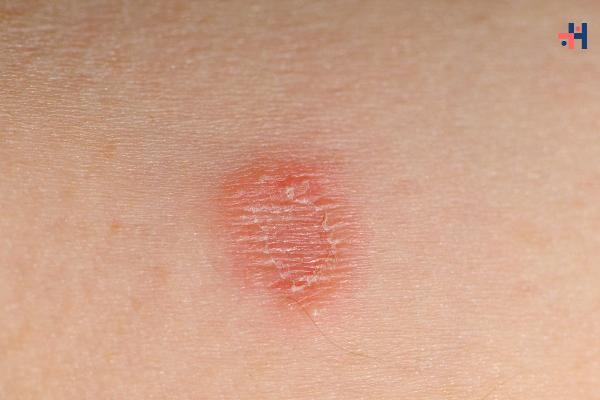Understanding Ringworm Disease: Causes, Symptoms, and Treatments

Strong 8k brings an ultra-HD IPTV experience to your living room and your pocket.
Understanding Ringworm Disease: Causes, Symptoms | Healthcare 360 Magazine
Ringworm disease, also known as tinea, is a common fungal infection that affects the skin, hair, and nails. Despite its name, ringworm has nothing to do with worms; it’s caused by various types of fungi. This comprehensive guide will cover the causes, symptoms, and treatments for ringworm disease to help you understand and manage this condition effectively.
What is Ringworm Disease?
Ringworm disease is a superficial fungal infection caused by dermatophytes, a group of fungi that thrive on keratin, a protein found in the skin, hair, and nails. The name “ringworm” originates from the circular, ring-like rash that typically appears on the skin, although the appearance can vary.
Types of Ringworm
Understanding Ringworm Disease: Causes, Symptoms | Healthcare 360 Magazine
Ringworm can affect different parts of the body and is classified based on the location of the infection:
Tinea Corporis: Affects the body’s trunk and limbs, characterized by circular, red, and scaly patches with a ring-like appearance.
Tinea Pedis: Commonly known as athlete’s foot, this type affects the feet, especially the spaces between the toes. It can cause itching, redness, and peeling skin.
Tinea Cruris: Also known as jock itch, it affects the groin area. It causes itching, redness, and a rash that can spread to the inner thighs and buttocks.
Tinea Capitis: Affects the scalp, leading to hair loss, itching, and scaly patches. It is more common in children but can also affect adults.
Tinea Unguium (Onychomycosis): Affects the nails, causing them to become thickened, discolored, and brittle. It’s often difficult to treat and may require oral antifungal medication.
Causes of Ringworm
Ringworm disease is caused by dermatophytes, which are fungi that can survive in warm, moist environments. Common causes and risk factors include:
Direct Contact: The infection can spread through direct contact with an infected person or animal.
Indirect Contact: Fungi can spread via contaminated objects such as towels, bedding, or shared surfaces in public places like swimming pools or gym floors.
Animal Contact: Pets, especially cats and dogs, can carry ringworm fungi and transmit them to humans.
Poor Hygiene: Inadequate personal hygiene can increase the risk of infection. Sweating and wearing damp clothes can provide a suitable environment for fungal growth.
Weakened Immune System: Individuals with compromised immune systems or certain medical conditions may be more susceptible to ringworm infections.
Symptoms of Ringworm Disease
The symptoms of ringworm can vary depending on the location of the infection. Common signs and symptoms include:
Understanding Ringworm Disease: Causes, Symptoms | Healthcare 360 Magazine
Skin Lesions: Red, circular, and scaly patches with a raised border. The center of the lesion may appear clearer as the infection progresses.
Itching and Discomfort: Affected areas often itch and can be uncomfortable, leading to scratching and potential secondary infections.
Hair Loss: In cases of tinea capitis, affected areas on the scalp may experience hair loss and develop scaly patches.
Nail Changes: For tinea unguium, nails may become thickened, discolored, and brittle, making them more prone to breaking.
Redness and Swelling: The skin may appear red, swollen, and inflamed, especially in more severe cases.
Diagnosis of Ringworm
Diagnosing ringworm typically involves a combination of medical history, physical examination, and laboratory tests. Your healthcare provider may:
Examine the Rash: Inspect the characteristic appearance of the rash and its location.
Perform a KOH Test: A potassium hydroxide (KOH) preparation test involves scraping the affected skin and examining it under a microscope to identify fungal elements.
Culture: A culture of skin, hair, or nail samples may be taken to confirm the presence of dermatophytes and identify the specific fungus.
Wood’s Lamp Examination: Some types of fungi fluoresce under ultraviolet light, which can aid in diagnosis.
Treatment Options for Ringworm Disease
Effective treatment for ringworm focuses on eliminating the fungal infection and alleviating symptoms. Treatment options include:
Topical Antifungals: Over-the-counter antifungal creams, ointments, or powders such as clotrimazole, miconazole, or terbinafine are commonly used for mild cases. Apply the medication as directed, usually for 2-4 weeks.
Oral Antifungals: For more severe cases, or when topical treatments are ineffective, oral antifungal medications such as terbinafine, itraconazole, or fluconazole may be prescribed.
Proper Hygiene: Maintain good personal hygiene to prevent the spread of the infection. Wash affected areas regularly with soap and water, and keep them dry.
Avoid Sharing Personal Items: Do not share towels, clothing, or other personal items that may come into contact with the infected area.
Treat Pets: If a pet is infected, seek veterinary treatment to prevent reinfection and further spread.
Prevention of Ringworm
Preventing ringworm involves maintaining good hygiene and avoiding exposure to fungal sources. Key preventive measures include:
Understanding Ringworm Disease: Causes, Symptoms | Healthcare 360 Magazine
Practice Good Hygiene: Regularly wash your hands, body, and feet, and ensure that skin folds are kept clean and dry.
Wear Appropriate Clothing: Choose breathable, moisture-wicking fabrics to reduce sweating and keep the skin dry.
Avoid Sharing Personal Items: Do not share towels, shoes, or other personal items that may come into contact with infected skin.
Protect Yourself in Public Areas: Wear flip-flops or protective footwear in public showers, swimming pools, and locker rooms.
Inspect Pets Regularly: Check pets for signs of ringworm and seek prompt treatment if needed.
Living with Ringworm Disease
While ringworm is generally treatable, managing the condition involves:
Following Treatment Instructions: Adhere to prescribed treatments and complete the full course, even if symptoms improve.
Monitoring for Recurrence: Be vigilant for any signs of recurrence or new infections, and seek medical advice if symptoms persist.
Educating Yourself and Others: Understand how ringworm spreads and inform those who may be at risk to prevent further transmission.
Conclusion
Ringworm disease, while common, can be effectively managed with proper treatment and preventive measures. Understanding the causes, symptoms, and treatment options can help you address and prevent this fungal infection. If you suspect you have ringworm, consult a healthcare provider for an accurate diagnosis and appropriate treatment. By taking proactive steps, you can effectively control the infection and reduce the risk of recurrence.
Find practical solutions to common challenges through our insightful articles on Healthcare 360 Magazine
Note: IndiBlogHub features both user-submitted and editorial content. We do not verify third-party contributions. Read our Disclaimer and Privacy Policyfor details.


